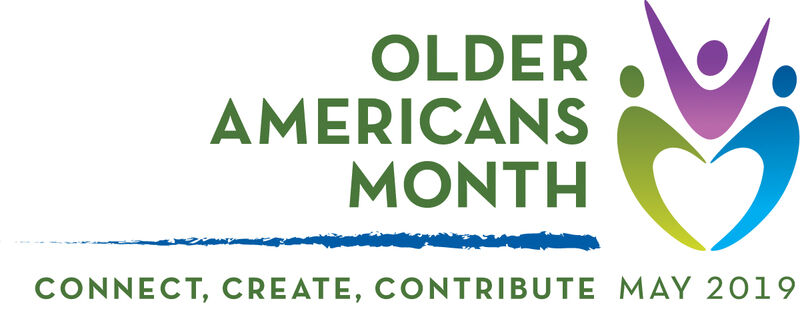
May is Older Americans Month! Observance of Older Americans Month (OAM) is lead by the Administration for Community Living (ACL), which is the overarching funder of the ADA National Network. In 2019, the focus is of OAM is: Connect, Create, and Contribute. ACL encourages older adults and their communities to:
- Connect with friends, family, and services that support participation.
- Create by engaging in activities that promote learning, health, and personal enrichment.
- Contribute time, talent, and life experience to benefit others.
We know that one in five Americans has a disability and that this number is likely to increase as our population ages. At the RMADAC Center, we often say that it’s no “if,” but “when” a disability will affect you or a loved one. As a refresher, the ADA defines disability as a physical or mental impairment that substantially limits one or more major life activity. Some of these major life activities include: seeing, hearing, walking, and caring for yourself. Most of us can think of an older adult in our life who has limited vision, hearing, and mobility. This is why it is critical that you understand your rights and responsibilities under the ADA.
If you are a business owner, I am positive you want to ensure that your customers can access your goods and services as they age. Local government officials know that our older population is an integral piece of the fabric of our community. Employers understand that the knowledge and lessons from our older workforce should be used to move our goals forward.
As you celebrate Older Americans Month, I encourage you to think about how you make different environments and activities inclusive for older adults and those who may have a disability. The ADA is a good starting off point to ensure that you are creating inclusive spaces for everyone. Remember that the ADA doesn’t limit you from going above and beyond.
Here are some of my tips for building inclusiveness for older adults (and others with disabilities).
- When planning events and outings, make sure that the environment is free of background noise and that the acoustics are such that those with limited hearing can understand you.
- If you are providing reading materials, be sure you use large print and appropriate font and colors.
- Consider the location of your services and make sure that a person with limited mobility easily enter your business and access goods and services.
- Evaluate your accessible parking to make sure that it is clearly marked, not blocked, and that people aren’t illegally using the space.
- Look at the facilities where your programs are offered and require that they are complaint with the 2010 Standards for Accessible Design.
- Think about how you offer your services, including online, and make sure that these mediums are accessible to all.
- Gather feedback from your community on how you can make your services, programs, and activities as inclusive as possible.
Click here for a list of resources that can help you support Older Americans in your community. Through these tips and other cornerstone ADA guidance, you will build diverse community that allows Older Americans to Connect, Create and Contribute!